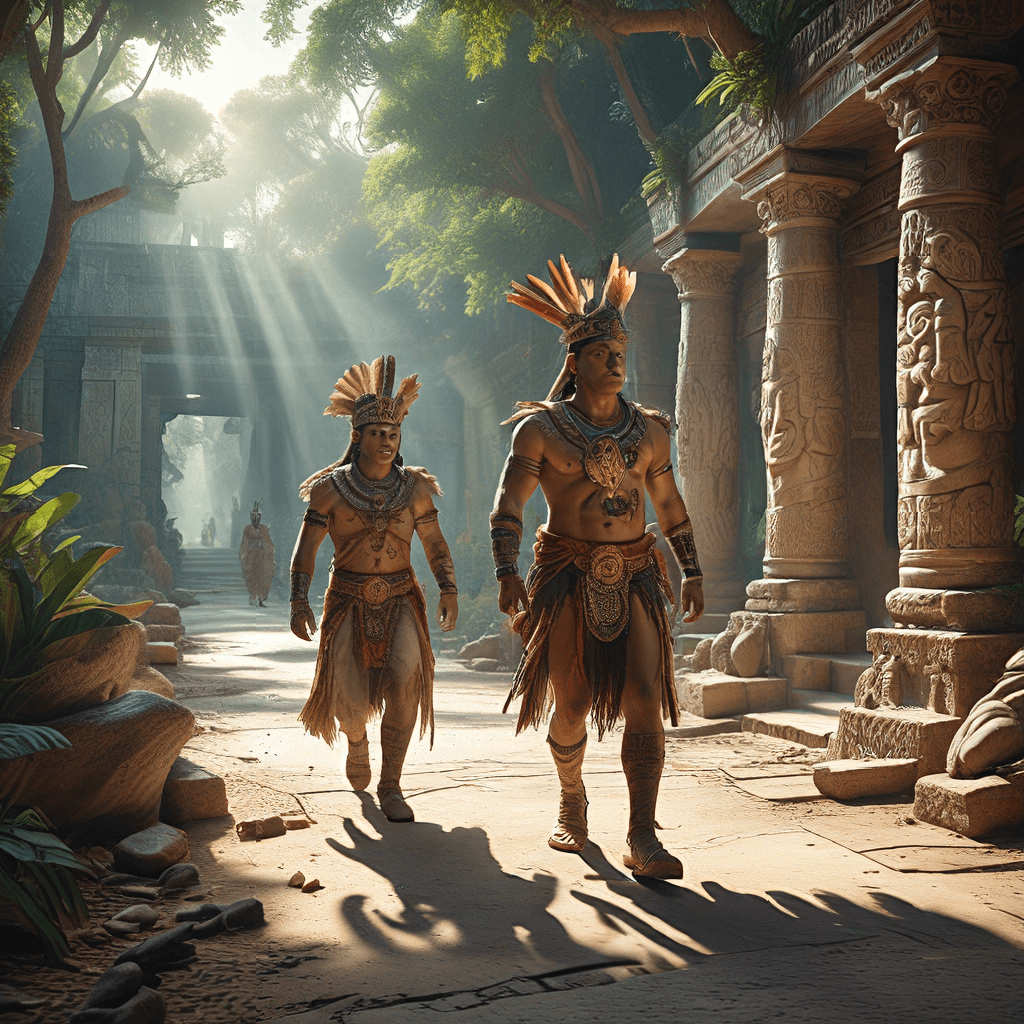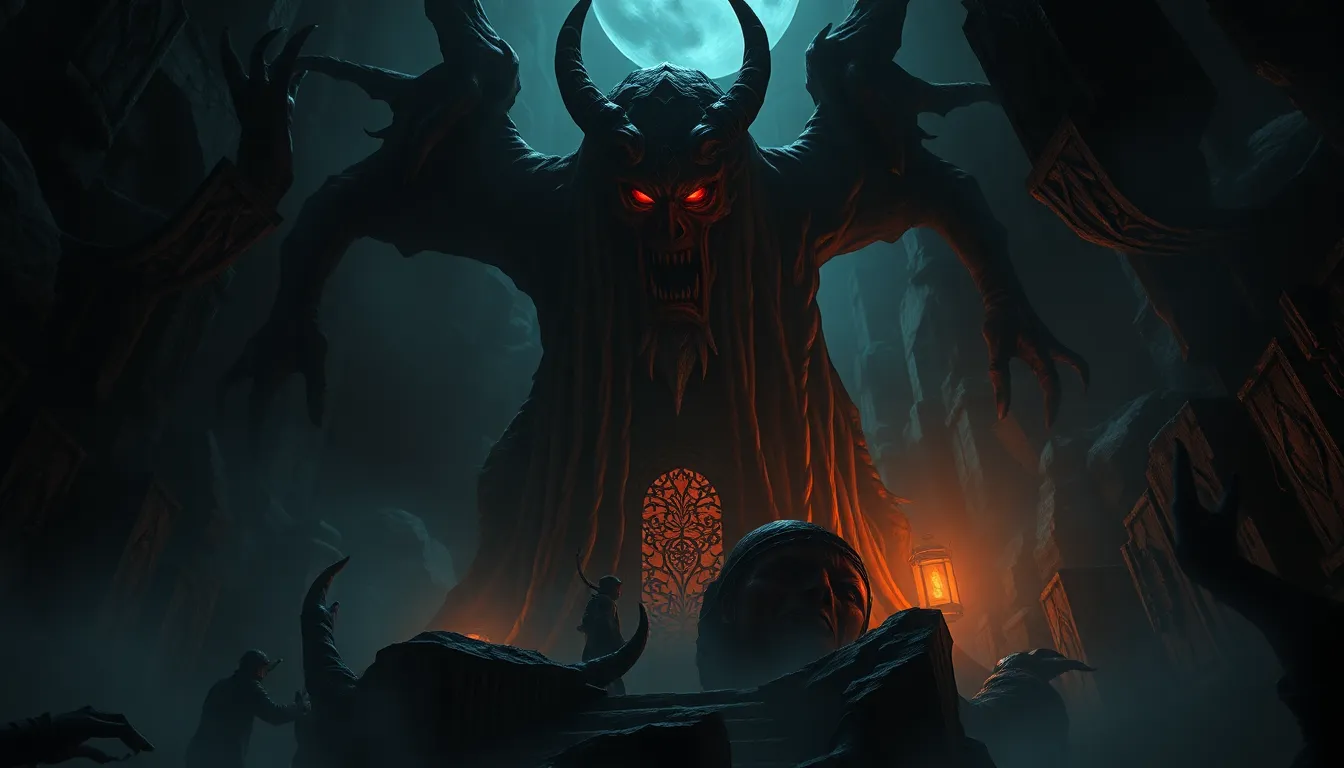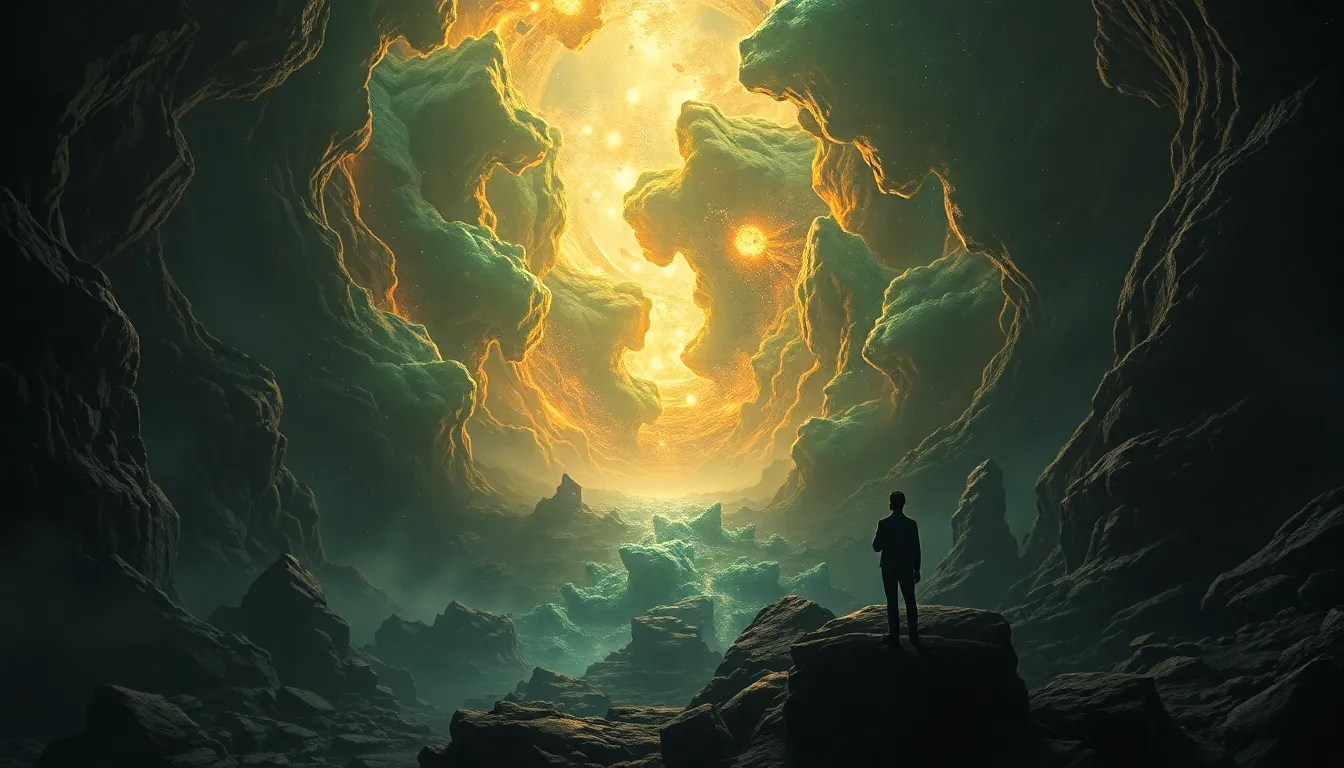Mayan Mythology and the Influence of Trade Routes
The Pantheon of Mayan Gods:
The ancient Maya civilization worshipped a complex and diverse pantheon of gods, each with their own unique attributes and domain. Among the most important deities were:
- Itzamna: The creator god, often depicted as a wrinkled old man with a long beard. He was associated with knowledge, wisdom, and the heavens.
- Ix Chel: The goddess of medicine, childbirth, and fertility. She was worshipped as the patroness of women and was often depicted as a young woman with flowing hair and a beautiful face.
- Chac: The god of rain and lightning. He was associated with agriculture and the fertility of the land.
- Kukulkan: The feathered serpent god, often associated with wind, water, and the morning star. He was a powerful deity who played a significant role in Mayan mythology and was worshipped throughout Mesoamerica.
These are just a few examples of the many gods and goddesses worshipped by the ancient Maya. These deities played a central role in Mayan life and culture, shaping their beliefs, rituals, and worldview.
The Importance of Deities in Mayan Life and Culture:
The Mayan gods were more than just objects of worship; they were integral to the daily lives of the Maya people. Each deity was believed to have a specific role in the world, and people prayed to them for guidance, protection, and good fortune.
Deities were also invoked in rituals and ceremonies, which were an essential part of Mayan society. These rituals were often performed by priests and shamans, who were believed to have the ability to communicate with the gods.
The importance of deities in Mayan life is reflected in the vast amount of art and architecture dedicated to them. Temples, pyramids, and palaces were adorned with images of gods and goddesses, and elaborate rituals were performed to appease them.
The Popol Vuh:
The Popol Vuh is a sacred text of the Quiché Maya people, one of the Maya groups that inhabited Guatemala. It is considered one of the most important sources of information about Mayan mythology and history.
The Popol Vuh tells the story of the creation of the world, the exploits of the Maya hero twins, and the origins of the Maya people. It also contains valuable information about Mayan beliefs, rituals, and cosmology.
The Popol Vuh is a complex and fascinating text that has been the subject of much scholarly debate. It is a valuable source of information about Maya culture and religion, and it continues to be studied and interpreted by scholars today.
Rituals and Sacrifices:
Rituals played a central role in Mayan society, and they were performed for a variety of purposes, including:
- To appease the gods and ensure good fortune.
- To mark important life events, such as birth, marriage, and death.
- To celebrate the changing seasons and the agricultural cycle.
- To heal the sick and injured.
Some rituals involved the sacrifice of animals, and in some cases, human sacrifice was also practiced. Human sacrifice was reserved for special occasions, such as the dedication of a new temple or the coronation of a new king.
The Role of Rituals in Mayan Society:
Rituals were an important part of Mayan life, and they served a variety of purposes. They helped to maintain social order, reinforce religious beliefs, and provide a sense of community. They also played a role in maintaining the economic and political power of the ruling elite.
The Mayan Calendar:
The Mayans developed a complex and sophisticated calendar system that played a central role in their religion and society. The calendar consisted of a combination of 20-day months and 18-month years, creating a 360-day cycle. On top of this, they also had a 260-day "sacred round" calendar, which was used for religious ceremonies and rituals.
The Mayan calendar was not only used to track time but also to predict astronomical events, such as solstices and equinoxes. It was also believed to be connected to the cycles of life and death, and was used to guide agricultural practices.
The accuracy and complexity of the Mayan calendar is a testament to the Maya's advanced knowledge of astronomy and mathematics. It is still used today by some indigenous communities in Guatemala and Mexico, and its influence can be seen in many other Mesoamerican calendars.
Trade Routes and Cultural Exchange:
The ancient Maya civilization had an extensive network of trade routes that connected them to other cultures in Mesoamerica and beyond. These trade routes facilitated the exchange of goods, ideas, and beliefs, which had a significant impact on the development of Mayan mythology.
Through trade, the Mayans came into contact with the cultures of Teotihuacan, the Zapotecs, and the Olmecs. These cultures had their own unique mythologies and religious beliefs, which influenced the development of Mayan mythology.
For example, the concept of a feathered serpent god, Kukulkan, was likely adopted from the Teotihuacan culture. Similarly, the Mayan creation myth shares some similarities with the creation myths of other Mesoamerican cultures.
The Influence of Foreign Cultures:
The influence of foreign cultures on Mayan mythology is evident in the adoption and adaptation of foreign deities. For example, the god Quetzalcoatl, the feathered serpent god from Teotihuacan, was adopted into the Mayan pantheon as Kukulkan. Similarly, the goddess Xochiquetzal, the goddess of flowers and beauty from the central Mexican highlands, was also adopted into the Mayan pantheon.
The adoption of foreign deities reflects the openness of the Maya to new ideas and beliefs. It also shows how trade and cultural exchange played a significant role in shaping the development of Mayan mythology.
The Role of Merchants:
Merchants played an important role in disseminating cultural ideas and beliefs throughout the Maya region. They traveled long distances to trade goods, and in the process, they came into contact with people from different cultures. These interactions led to the exchange of ideas, beliefs, and stories, which helped to shape the development of Mayan mythology.
The role of merchants in cultural exchange is evident in the archaeological record. For example, Mayan merchants have been found to have buried offerings in foreign cities, suggesting that they played a role in spreading religious beliefs and practices.
Archaeological Evidence:
Archaeological evidence provides valuable insights into Mayan mythology. Temples, pyramids, and other structures often depict scenes from Mayan myths and legends. For example, the Temple of the Inscriptions at Palenque depicts the story of the Mayan hero, Pakal the Great.
Artifacts, such as pottery and figurines, also provide clues about Mayan mythology. These objects often depict gods, goddesses, and other mythological figures. For example, a famous Mayan vase depicts the creation myth, showing the emergence of the first humans from the maize plant.
Theories of Influence:
There are several theories about how trade routes may have influenced the development of Mayan mythology. One theory is that trade routes facilitated the spread of religious ideas and beliefs from other cultures. Another theory is that trade routes provided opportunities for cultural exchange, leading to the adoption and adaptation of foreign deities.
It is likely that both of these factors played a role in the development of Mayan mythology. The extensive network of trade routes that connected the Maya to other cultures created opportunities for the exchange of ideas and beliefs, which had a significant impact on the development of their mythology.
Conclusion:
The relationship between Mayan mythology and trade routes is complex and multifaceted. Trade routes facilitated the exchange of goods, ideas, and beliefs, which had a significant impact on the development of Mayan mythology. The adoption of foreign deities, the influence of foreign cultures, and the role of merchants all played a role in shaping the unique and complex mythology of the ancient Maya.
FAQ:
What are some of the most important Mayan gods?
Some of the most important Mayan gods include Itzamna, the creator god; Ix Chel, the goddess of medicine, childbirth, and fertility; Chac, the god of rain and lightning; and Kukulkan, the feathered serpent god.
What is the Popol Vuh?
The Popol Vuh is a sacred text of the Quiché Maya people, one of the Maya groups that inhabited Guatemala. It is considered one of the most important sources of information about Mayan mythology and history.
What was the role of rituals in Mayan society?
Rituals played a central role in Mayan society, and they were performed for a variety of purposes, including to appease the gods, mark important life events, celebrate the changing seasons, and heal the sick.
What is the significance of the Mayan calendar?
The Mayan calendar was a complex and sophisticated system that was used to track time, predict astronomical events, and guide agricultural practices. It is still used today by some indigenous communities in Guatemala and Mexico.
How did trade routes influence Mayan mythology?
Trade routes facilitated the exchange of goods, ideas, and beliefs, which had a significant impact on the development of Mayan mythology. The adoption of foreign deities, the influence of foreign cultures, and the role of merchants all played a role in shaping the unique and complex mythology of the ancient Maya.



